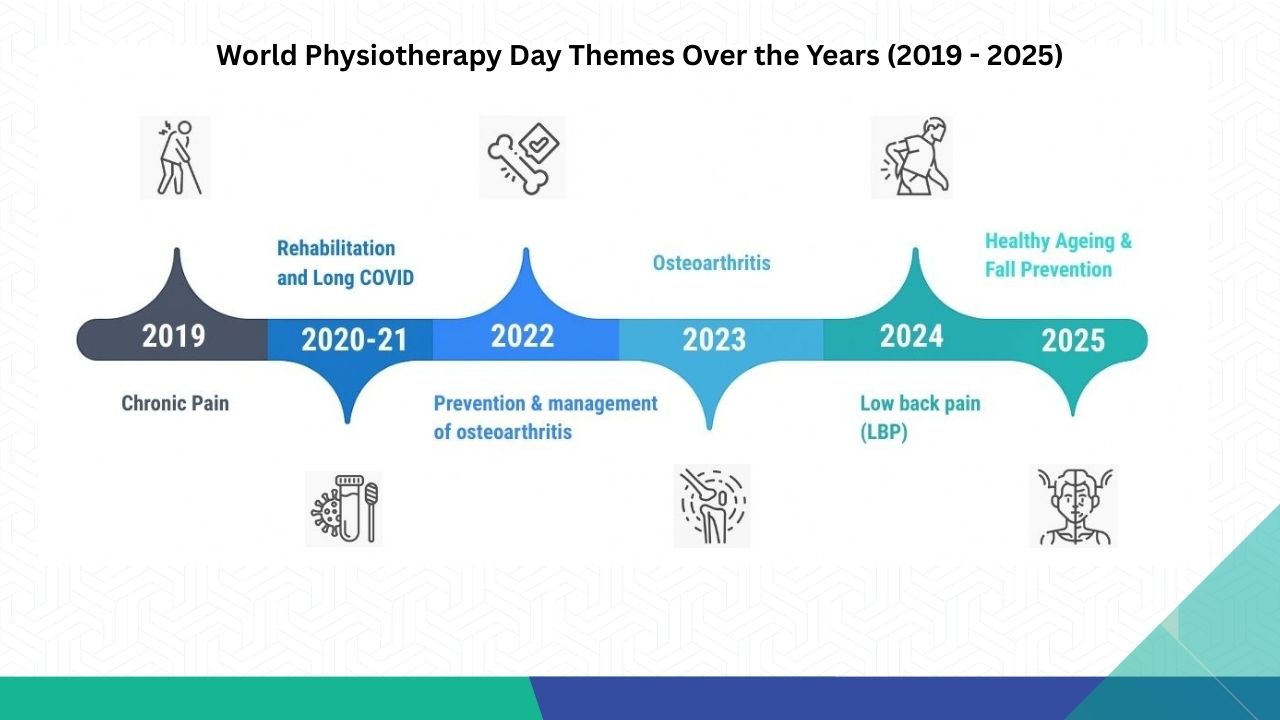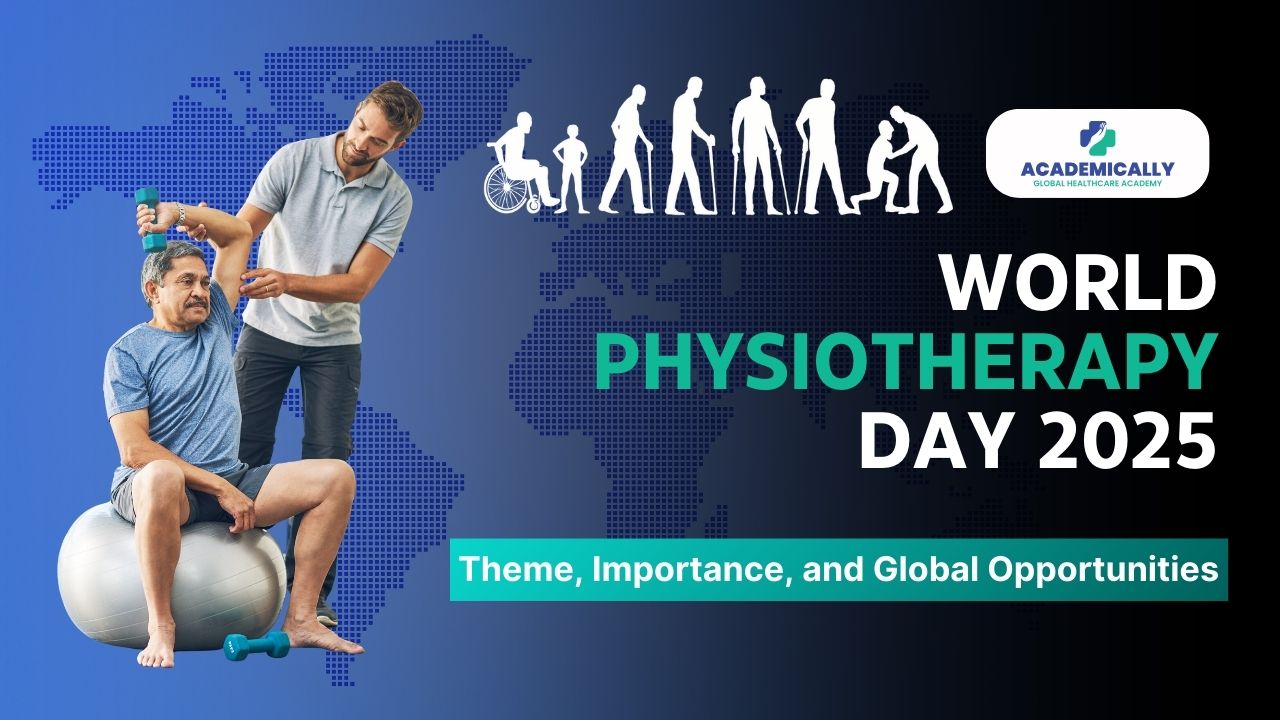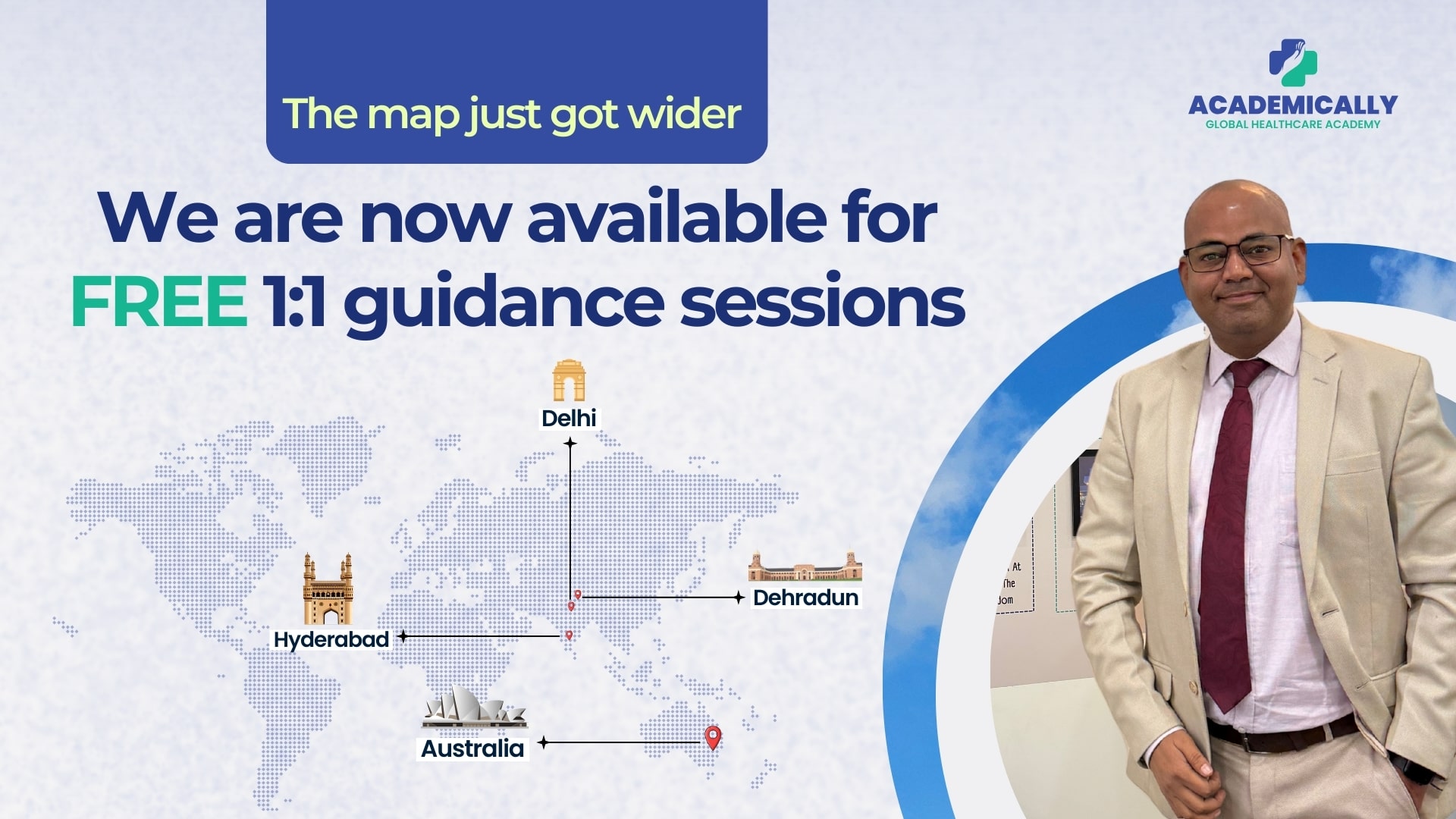Why do we celebrate World Physiotherapy Day every year?
Did you know… By 2050, over 2.1 billion people will be aged 60 or older, and physiotherapy is key to keeping them active and independent.
World Physiotherapy Day is marked on 8 September every year to celebrate the amazing job physiotherapists do to keep people mobile, independent, and well. The day was first coined in 1996 by World Physiotherapy, and since then, it’s become a truly global event.
Today, World Physiotherapy Day represents more than 600,000 physiotherapists through 129 member organizations. In fact, it is a global access that transforms this day into a worldwide campaign for health. In 2025, physiotherapy highlights healthy aging, preventing frailty, and falls.
World Physiotherapy Day 2025 Theme: Healthy Ageing & Fall Prevention
This year it's all about the theme, “healthy aging”, which emphasises on preventing frailty and falls.

How Countries Celebrate World Physiotherapy Day
Global Campaign: World Physiotherapy toolkit, social media drives, and educational resources are initiated worldwide.
India: Celebrates with awareness rallies, inspiring talks, cultural activities, and student competitions, headed by universities like Maharishi, LTSU, and Manipal.
UAE: Hospital Host Public Awareness Booth, VR Rehab Demo, Group Exercise Session, and Staff Recognition Events.
UK and USA: Associations and clinics promote physiotherapy through workshops, community programs, and digital campaigns.
From ceremonies awareness to technical-capable rehabilitation demo, show the global relevance of physiotherapy, and create a natural link for educational training and licensing opportunities.
Why collective attention on ageing, and why now?
According to the World Health Organization (WHO):
- 60 years old or more will double in numbers By 2050, while the 80+ age group will be 426 million.
- Each year, about 684,000 people die from falling, especially in people older than 60 years old, causing it to become another major cause of unintentional injury deaths globally.
- About 37 million require attention to therapy, and account for more disability than road injuries.
- Healthy aging is not just a medical issue-it is a socio-economic imperative. The aging population means that the pressure on the need for health systems, high disability burden, and the targeted preventive strategies have increased.
Why does it matter to physiotherapy and policy?
By focusing on frailty and falls, the 2025 themes focuses on
- The real world, preventable risks faced by older adults.
- The inactivity and the costs of injuries attract widespread attention, pushing for policy changes.
- Physiotherapy as a frontline intervention - from community programs to national aging strategies - can significantly reduce risk and health care burden.
- This approach brings clear policy relevance - aligning World Physiotherapy Day with a global health structure such as WHO's Decade of Healthy Aging (2020-2030)and opens the doors for scalable advocacy.
Global Aging Trends and the Role of Physiotherapy
| Year / Projection | Population Aged 60+ | Population Aged 80+ | Implications |
| 2019 | 1 billion | – | Rising global aging begins impacting healthcare demand. |
| 2030 | 1.4 billion | – | Larger elderly population needing chronic care and rehabilitation. |
| 2050 | 2.1 billion | 426 million (tripled) | Sharp increase in frailty, falls, arthritis, and mobility challenges. |
Physiotherapy is important in reducing frailty, preventing falls, maintaining mobility, and helping older adults to be active within families and communities.
How Physiotherapy Supports Healthy Aging
| Benefit | Evidence-Based Impact |
| Fall Prevention | Balance + strength training lowers fall risk by up to 35% (e.g., Otago Program). |
| Frailty Reduction | Active older adults are 41% less likely to develop frailty. |
| Mobility & Independence | Exercise programs improve walking, stair climbing, and daily activity confidence. |
| Functional Capacity | Power training enhances speed, coordination, and independence (e.g., TUG test improvements). |
| Bone & Muscle Health | Resistance training slows sarcopenia, supports posture, and strengthens bones to reduce fracture risk. |
Physiotherapists Opportunities Globally
The world is aging and creating high demand for skilled physiotherapists in geriatrics, fall-prevention, and chronic disease management. This creates a high need for skilled physiotherapists in elderly care.
- High-demand countries:
- Gulf countries (UAE, Qatar, Saudi Arabia) are focusing majorly on rehabilitation centres and elder care.
- Europe & Canada face shortages of physiotherapists to serve rapidly ageing populations.
- Australia continues to open roles for allied health professionals, especially in community-based elderly care.
- Career scope: Beyond hospitals, physiotherapists are highly needed in rehabilitation centres, nursing homes, tele-rehab platforms, and home-care services.
Conclusion
Physiotherapy is more than treatment. It is prevention, empowerment, and freedom. By focusing on strength, balance, flexibility, and dynamics, physiotherapy enables older adults to live with confidence, reduce falls, and enjoy a high quality of life.
A 2025 theme of healthy aging and prevention of falls is a reminder today - such as being active, looking for professional guidance, and joining community programs - that a healthy person can be secured tomorrow.
We at Academically provide licensing preparation courses so that you can clear them and secure a stable job in the Gulf countries, Australia, UK. These are designed to help physiotherapists bridge educational knowledge with international requirements. With the population aging worldwide, the demand for licensed physiotherapists is increasing rapidly in regional areas, too. Don't worry, our team will help you with the complete pathway.




